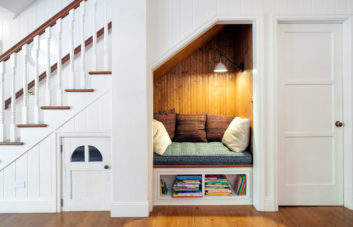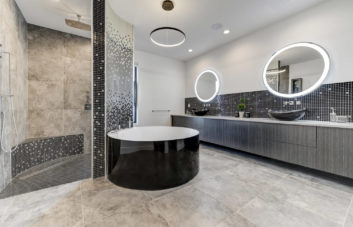Now that you’ve made most of the important decisions in the process of choosing a bathroom sink, it’s time to consider a few more elements so that you can find the one that’s perfect for you. You’ve learned about the mount, size, height, and depth of bathroom sinks, and now you’ll learn about three additional considerations that are crucial to your final decision.
Faucet compatibility
This one’s a biggie. If you are set on a certain faucet, you need to ensure that it works with the sink you like. If you want a single-hole faucet, skip sinks with more than one pre-drilled hole; if you picked a wall-mount faucet, your sink should not have any holes.
If you prefer a tall vessel sink, you’ll need an extra-tall faucet. Check the projection of the faucet (how far it sticks out over the sink) – make sure that the water flow is not too close to the edge of the faucet, which would lead to awkward hand-washing and lots of splashing.
Also important is the flow rate. If the water flow is strong and your sink is shallow, that may be a recipe for very wet floors and counters.
Shape
Sinks are available in virtually every conceivable shape: the standard oval, circle, square, and rectangle as well as corner-shaped, triangular, D-shaped, and other irregular shapes. Shape is generally a matter of preference, but it can depend on available space, especially with an existing counter or vanity.
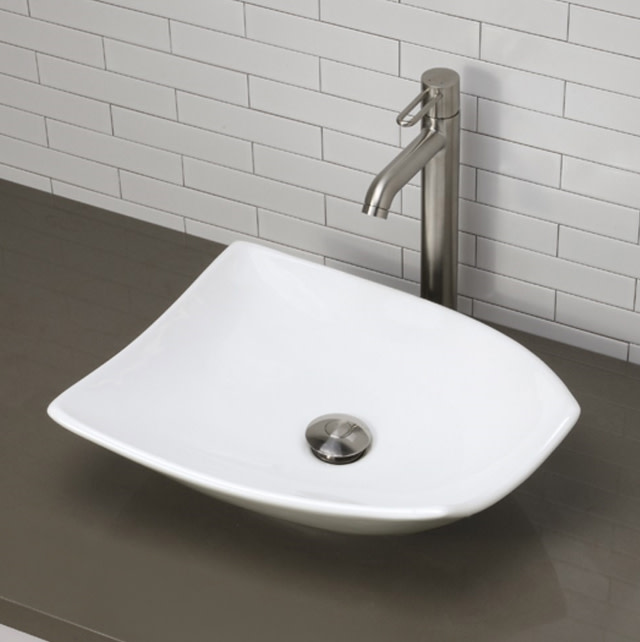
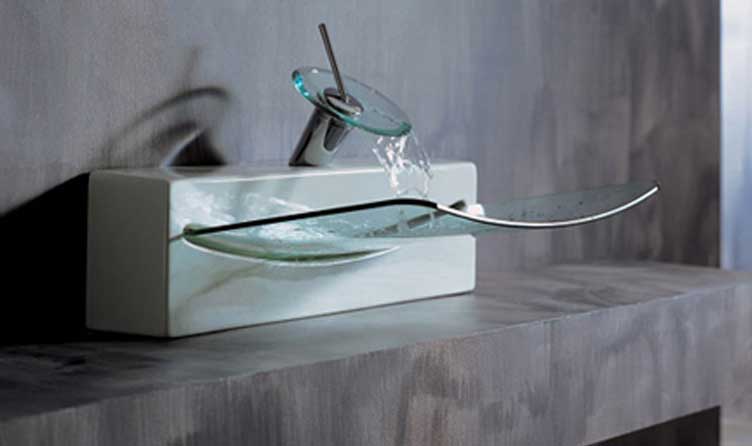
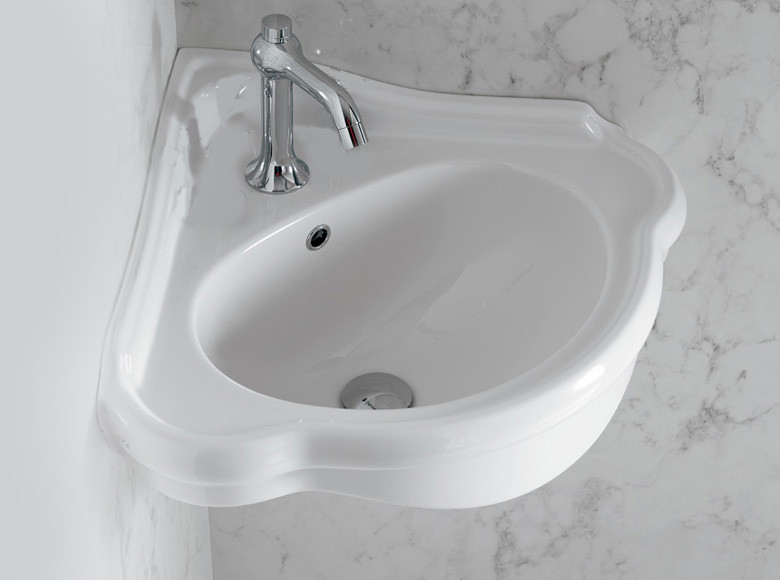
Material
Your sink’s composition is also largely a matter of preference – and, depending on your daringness, the most fun choice to make – but it can depend on your level of use. A delicate basin should not be used in children’s bathrooms or subjected to harsh cleaning products, so if you don’t want to baby your sink, stick with a hardier material.
Some sinks materials are sensitive to household cleaners, heat (think hair straighteners and blow dryers), and chemicals found in nail polish remover and other bathroom staples, and may stain, crack, or etch. Be honest with yourself about the kind of use your sink gets before deciding on a material. If you reaaaaally want that gorgeous basin but you know you won’t wipe it down after every use/seal it regularly/buy special cleaners for it, skip it (or put it somewhere that you’ll use it infrequently).
Follow this guide and chart from the experts at Lowe’s and Home Depot before choosing your sink material:
Vitreous china and its ceramic cousins provide a sink surface that is smooth, glossy, stain-resistant, durable, and easy to clean — an attractive combination in the bath.
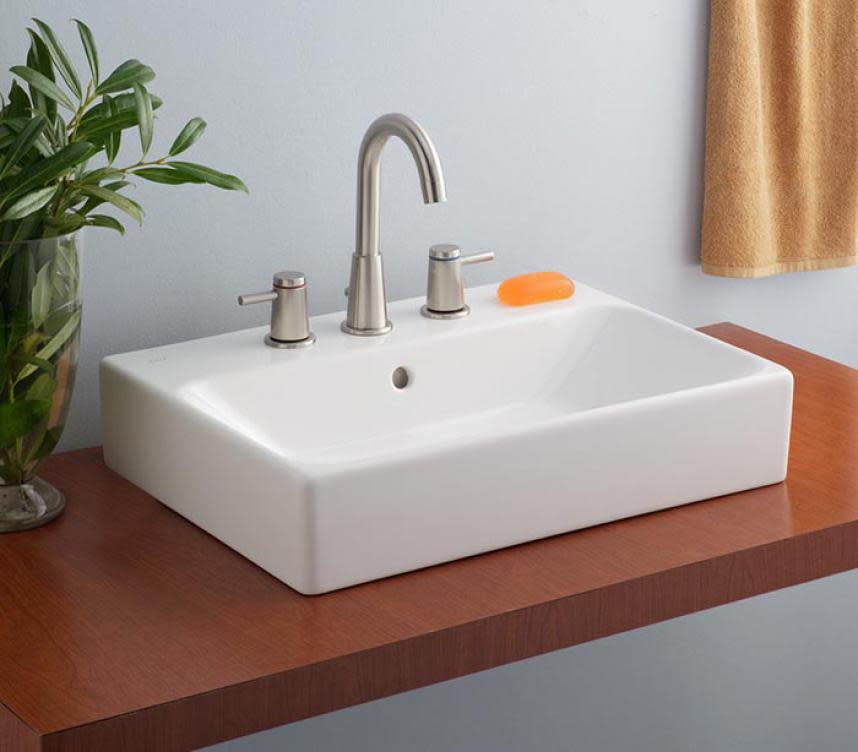
Glass sounds fragile but is surprisingly strong. A basin made of tempered glass is able to withstand normal bath use. You don’t want to drop heavy objects into it, however, and contact with sharp metal or glass items can cause scratches and chips. Glass can be a challenge to keep clean, too, especially if you have hard water.
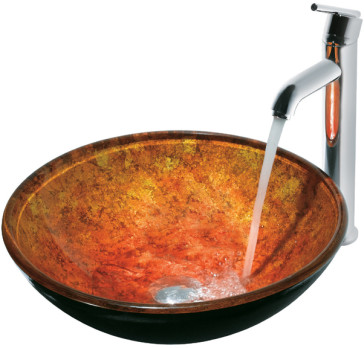
Stone sinks made of marble, granite, travertine, or onyx offer luxurious looks full of natural color and veining, plus they allow undermount basin installation. However, because all stone is porous to some degree, it is prone to staining and requires routine sealing.
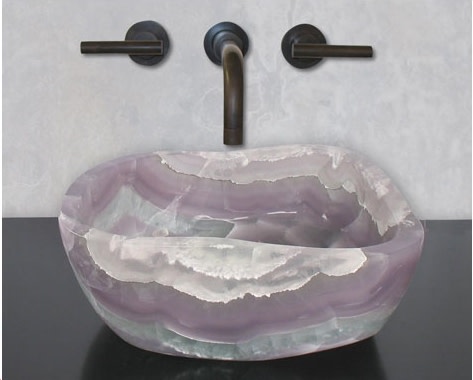
Solid-surfacing captures the look of natural stone in a composite material that’s easier to install and maintain than the real thing. A popular choice is a one-piece solid-surface countertop with an integral sink.
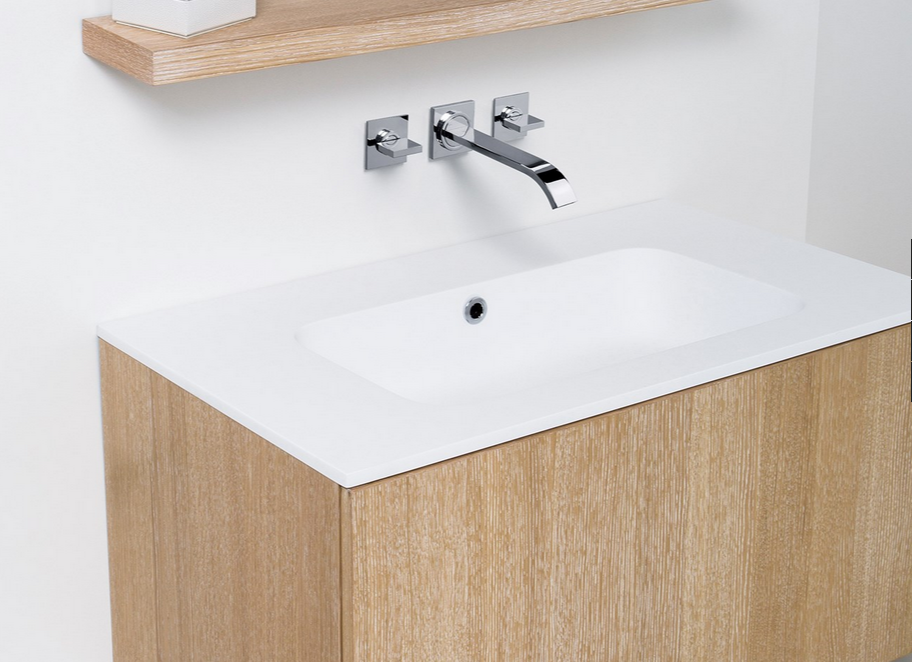
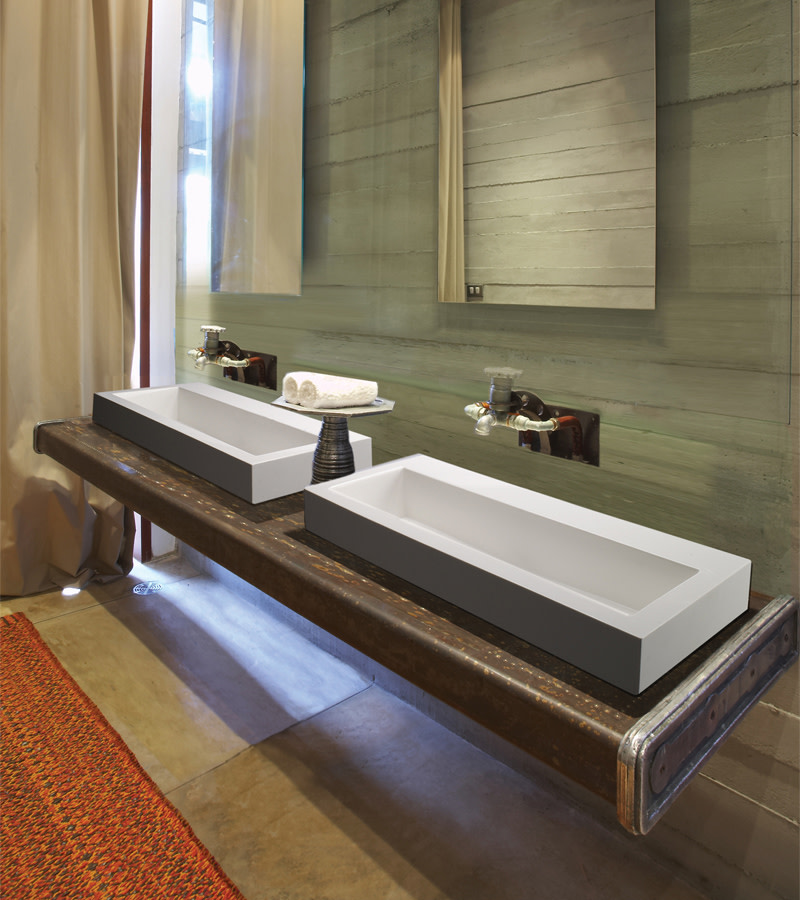
Metallic bath sinks range from the glossy enameled finish of a cast-iron model to the clean look of stainless steel and the earthiness of copper and nickel. Brushed and hammered finishes play up the texture of the metals.
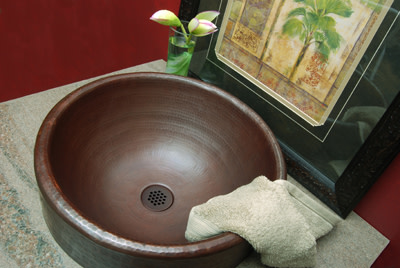
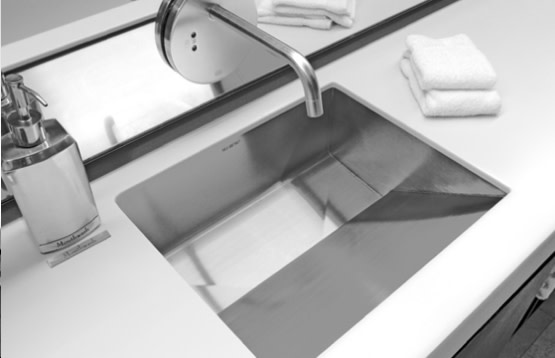
Material |
Description |
Points to Consider |
|---|---|---|
| Cast Polymer | Includes cultured marble, cultured granite and cultured onyx. Polyester resin mixed with ground marble and finished with a gel coating. | • Mixes the look of stone with the molding potential of synthetic materials • Extremely durable • Gel coating may crack over time • May not retain shine |
| Composite Materials | Made from acrylic resins and ground minerals. Color is solid through thickness of sink. | • Tough and durable • Available in a range of colors • Expensive • Use nonabrasive cleaners to prevent scratches |
| Copper/Bronze | Thicker materials will add durability and expense. | • Acquires a warm patina with age • Use nonabrasive cleaners |
| Enameled Cast Iron | Cast iron finished with enamel. Thickness provides a substantive look. | • Easy to clean • Available in many rich colors • Chip-resistant • Heavy−may require extra counter support |
| Enameled Steel | Made by spraying enamel on die-cast sheet metal and firing at high temperatures. Resembles cast iron. | • Lightweight • Slim edge profile • Susceptible to flexing that can result in cracks in the finish • May chip easily |
| Glass | Comprised of thick, tempered glass. | • Won’t shatter • May show water spots • Use nonabrasive cleaners • Ideal for countertop sinks |
| Solid-Surface Materials | Made with acrylic and/or polyester resins and baked into sheets. Resin provides flexibility while polyester provides dramatic coloring. | • Stain-resistant • Available in a variety of colors • Withstand heavy use • Can be used for integral sinks • Require installation by an authorized dealer to maintain warranty |
| Stainless Steel | Quality varies according to thickness, or gauge, and nickel content. The thicker the gauge and greater the concentration of nickel, the better the quality and higher the expense. | • Durable • Easy to clean • Thicker steel (18 gauge) resists water spots and dents • Thinner steel is more economical • Thin steel (22 gauge) may dent more easily and show scratches more quickly |
| Stone | Marble, granite, soapstone and onyx are commonly used. May also be cultured stone, a mixture of crushed stone and plastic resins. | • Highly durable • Heavy • Under-mounted and wall-mounted units may require extra support • Requires periodic resealing |
| Vitreous China | A pottery product made of clay fired at high temperatures. Often features a decorative pattern. | • Easy to clean • Low moisture absorption inhibits mildew growth • Resists discoloration and corrosion • May chip when struck by heavy objects |
| Wood | Typical species used include oak, birth, mahogany, teak and maple. Natural resins are extracted and replaced with artificial ones, after which wood is sealed with layers of epoxy. | • Provide a beautiful, stylish look • Expensive • Should be cleaned and wiped down after every use • Feature intricate construction • Offer a warm, soft appearance • Wax periodically to ensure durability |
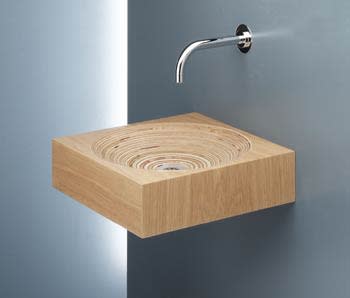
Congratulations! You’re now an informed consumer, armed with all the information you need to choose the right sink. Pick with confidence, and enjoy your new sink!


